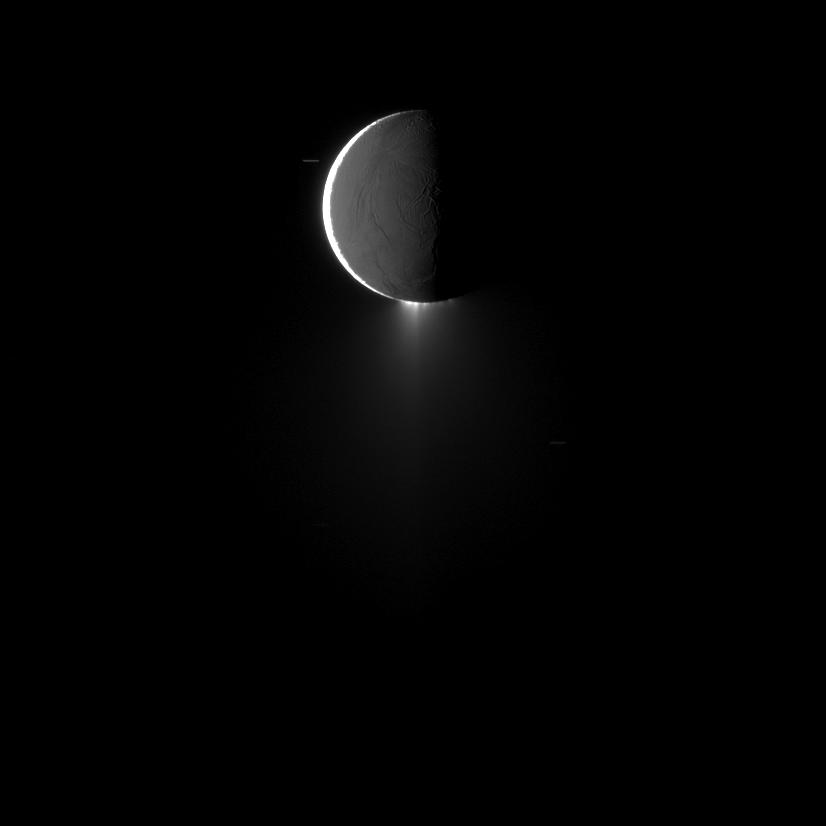High-Phase Plumes

| PIA Number | PIA12713 |
|---|---|
| Language |
|
Saturn's moon Enceladus, imaged at high phase, shows off its spectacular water ice plumes emanating from its south polar region.
This image was captured at a phase, or sun-Enceladus-spacecraft, angle of 159 degrees so that sunlight would reveal the backlit plumes. See Bursting at the Seams to learn more.
Sunlight brightly illuminates terrain on the left. Light reflected off Saturn illuminates the rest of the moon more dimly. This view looks toward the trailing hemisphere of Enceladus (504 kilometers, or 313 miles across). North is up.
Background stars, elongated by the movement of the spacecraft during the exposure, are also visible.
The image was taken in visible light with the Cassini spacecraft narrow-angle camera on Oct. 13, 2009. The view was obtained at a distance of approximately 431,000 kilometers (268,000 miles) from Enceladus. Image scale is 3 kilometers (2 miles) per pixel.
The Cassini-Huygens mission is a cooperative project of NASA, the European Space Agency and the Italian Space Agency. The Jet Propulsion Laboratory, a division of the California Institute of Technology in Pasadena, manages the mission for NASA's Science Mission Directorate, Washington, D.C. The Cassini orbiter and its two onboard cameras were designed, developed and assembled at JPL. The imaging operations center is based at the Space Science Institute in Boulder, Colo.
For more information about the Cassini-Huygens mission visit http://saturn.jpl.nasa.gov . The Cassini imaging team homepage is at http://ciclops.org .
Credit: NASA/JPL/Space Science Institute
